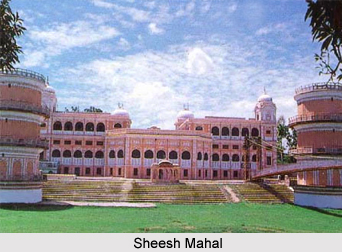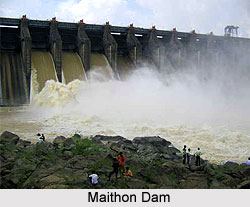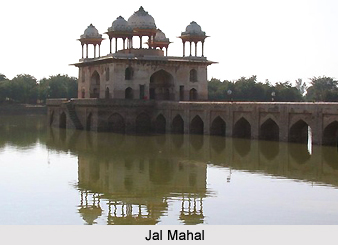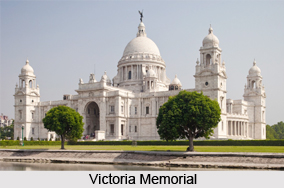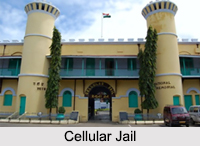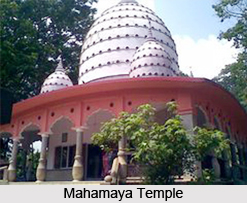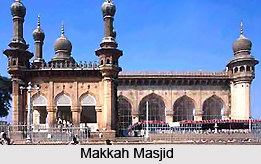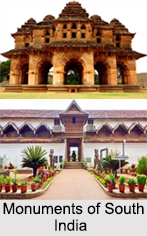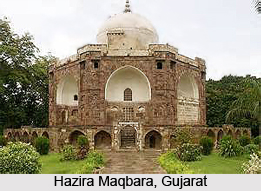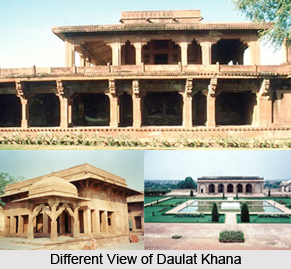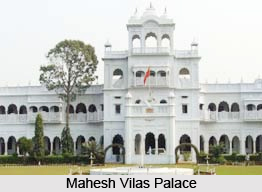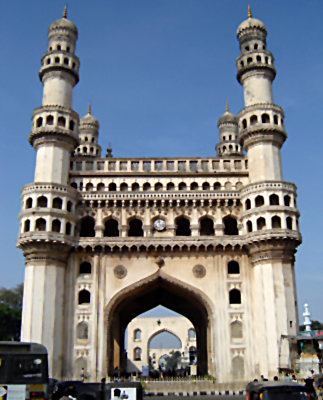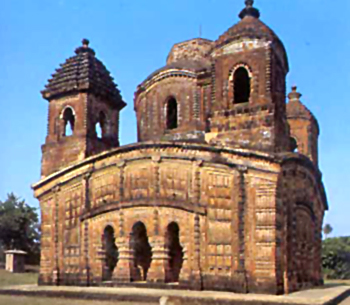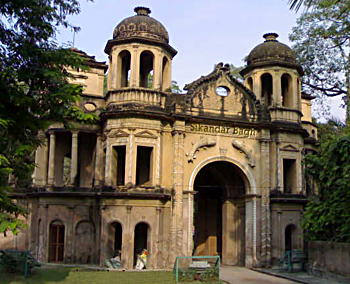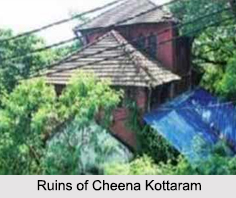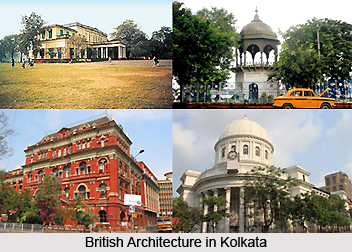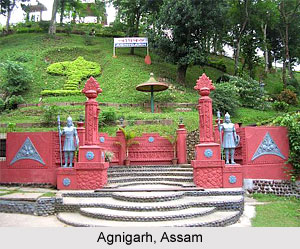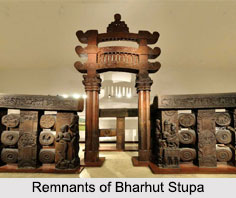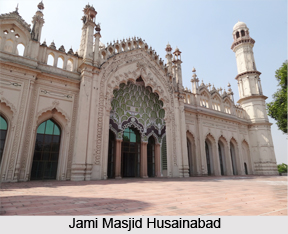 The Jami Masjid mosque in Husainabad is remarkable for its size as well as its elevation and architectural setting. The construction of the Jami Masjid was begun by Mohammad Shah and went on to be completed by his wife after his death. Its construction was completed sometime in the 1840`s. Muhammad Ali Shah also undertook the construction of a number of other monuments. He built the Imambara complex and a metalled road connecting Dilkusha to Husainabad. He also undertook the repairs of several historic monuments in Lucknow, besides building a Musafirkhana at Mumbai for the pilgrims visiting Karbala and Mecca. He had also started the construction of an Imambara attached to the Jami Masjid but it remained unfinished as he died before he could complete it.
The Jami Masjid mosque in Husainabad is remarkable for its size as well as its elevation and architectural setting. The construction of the Jami Masjid was begun by Mohammad Shah and went on to be completed by his wife after his death. Its construction was completed sometime in the 1840`s. Muhammad Ali Shah also undertook the construction of a number of other monuments. He built the Imambara complex and a metalled road connecting Dilkusha to Husainabad. He also undertook the repairs of several historic monuments in Lucknow, besides building a Musafirkhana at Mumbai for the pilgrims visiting Karbala and Mecca. He had also started the construction of an Imambara attached to the Jami Masjid but it remained unfinished as he died before he could complete it.
The Jami Masjid has a spacious courtyard, and three compartments of Maqsura or prayer halls. Nine lofty and ornamental arches highlight the facade. The propylon has a foliated tri-arched opening, decorated with exquisitely fine stucco. While it is built in the style of the Rumi Darwaza, the Jami Masjid Husainabad is more sophisticated and proportionate. The arcuate parapet of the mosque consists of a series of large and miniature arches flanked by turrets, while the octagonal minarets, crowned with cupolas are proportionate to the whole scheme. The minarets on the fourth tier are unique in having smaller decorative minarets in bold stucco. The three domes are raised on lofty drums. The large central dome follows the outlines of the later Mughal style. The side domes are fluted, with inverted lotus finials. The main prayer hall (Maqsura) has a narrow hall to its east and each hall is divided into three compartments approached through magnificent arched openings with tall fluted pillars and pilasters which bear western classical elements. The decorative moulding in stucco is painted in five colours.
The ceilings and the corners are beautifully decorated with textile motifs, discs and floral designs handled with the same delicacy as the ornamentation in the tomb of Safdarjung in Delhi. The Mihrabs of the main Maqsura have a floral moulding painted in blue, green, gray and gold, while the niches have fine specimens of Islamic calligraphy in the Naskh and Tughra scripts, containing Shiite Durud and religious texts which have been inscribed by Sayyid Kazim Shah Rizvi of Qum (Iran). These epigraphs are rare in that they resemble the pages of an illuminated manuscript.
The Jami Masjid is the biggest mosque in Lucknow and a great heritage of the city.
